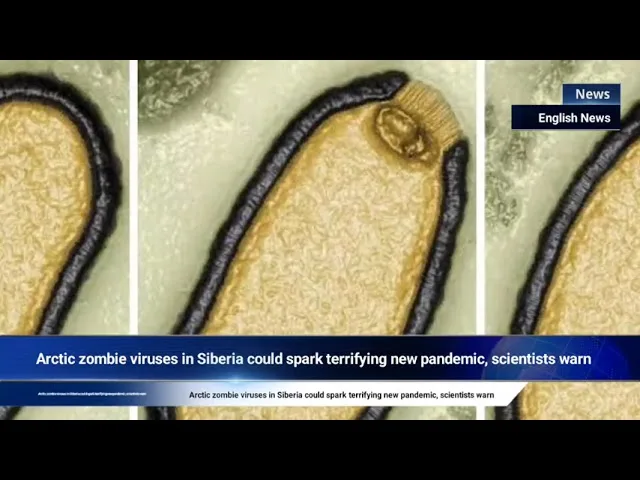As Arctic permafrost melts, ancient viruses pose terrifying risk to humanity
In a chilling revelation, scientists are sounding the alarm about the potential release of ancient viruses, nicknamed ‘zombie viruses,’ trapped in Arctic permafrost as climate change takes its toll. The fear is that these viruses, frozen for thousands of years, could be unleashed, posing a serious threat to humanity and triggering a new and terrifying pandemic.
Geneticist Jean-Michel Claverie of Aix-Marseille University emphasizes the urgency of considering outbreaks emerging from the far north, a perspective often overlooked in current pandemic threat analyses. Claverie states, “There are viruses up there that have the potential to infect humans and start a new disease outbreak.”
The term ‘zombie virus‘ is a colloquial nickname for these ancient strains, officially known as Methuselah microbes. While there is currently no imminent danger of these diseases being among us, scientists are expressing concerns about the future impact.
Virologist Marion Koopmans of the Erasmus Medical Center in Rotterdam warns that the permafrost may contain diseases encountered by our ancient ancestors or viruses so ancient that they have never affected our species. “We don’t know what viruses are lying out there in the permafrost, but I think there is a real risk that there might be one capable of triggering a disease outbreak – say of an ancient form of polio,” Koopmans cautions. “We have to assume that something like this could happen.”
Covering a fifth of the northern hemisphere, the permafrost is soil kept at temperatures below zero for extended periods. As climate change accelerates in the Arctic, these frozen viruses could be released into the environment. The permafrost layers in Canada, Siberia, and Alaska are melting rapidly, heating up several times faster than the average increase in global temperatures.
Explaining the threat, Claverie underscores the unique conditions of permafrost, stating, “The crucial point about permafrost is that it is cold, dark, and lacks oxygen, which is perfect for preserving biological material. You could put a yoghurt in permafrost, and it might still be edible 50,000 years later.”
While the world grapples with ongoing health crises, the prospect of ancient viruses re-emerging from the frozen depths adds a new dimension to the challenges faced by global scientific and healthcare communities.
